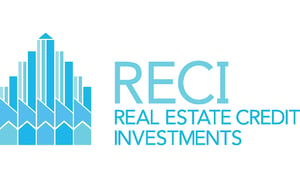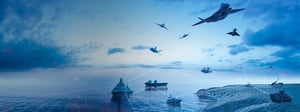Paragon Banking Group PLC (LON:PAG)), the specialist banking group, today announced its results for the year ended 30 September 2018.
Commenting on the results, Nigel Terrington, Chief Executive of Paragon, said:
“We have delivered another strong financial performance, with increased profits driven by broader lending growth and enhanced margins, whilst maintaining our high credit standards.
In the last year we have made great strides in our strategy to become a leading UK based specialist banking group. A combination of new start-up ventures and acquisitions means we now offer an increasingly broad range of products, supporting British savers, homeowners, landlords, consumers and small businesses.
The restructuring of our business last year enabled us to improve the efficiency of the allocation of our resources and capital. The broadening of our product range, coupled with our strong asset quality, leaves us well placed to deliver further targeted growth in the years ahead.”
Financial highlights
· Underlying profit before tax increased by 7.8% to £156.5 million (2017: £145.2 million) Statutory profit before tax increased by 25.3% to £181.5 million (2017: £144.8 million)
· Net interest margin increased by 8 basis points to 2.21% (2017: 2.13%)
· Underlying EPS up 11.3% to 48.2p (2017: 43.3p). EPS up by 29.7% to 55.9p (2017: 43.1p)
· Underlying RoTE up to 14.0% (2017: 13.5%). RoTE increased to 16.1% (2017: 13.4%)
· Idem Capital portfolio sale recycles capital to support business growth and acquisitions
· Capital levels remain strong, with CET1 of 13.8% (2017: 15.9%) following acquisitions
· Dividend per share up by 23.6% to 19.4p (2017: 15.7p), in line with policy announced in November 2017
Strong new business flows in Mortgages and Commercial Lending divisions
· Mortgage lending up 10.8% to £1,623.2 million (2017: £1,464.5 million)
· Buy-to-let lending pipeline up 28.9% to £778.9 million (2017: £604.2 million)
· Commercial Lending volumes up 82.6% to £710.0 million (2017: £388.9 million)
· Titlestone development finance business acquired in July 2018
· Acquisition of Iceberg professions finance business in December 2017
· Net loan book growth of 9.0%
Diversified funding model underpinned by strong retail deposit flow
· Deposit balances increased by 46.5% to £5.3 billion (2017: £3.6 billion)
OVERVIEW AND OUTLOOK
1. Overview
Our results highlight another year of strong financial and operational progress, alongside significant developments in our strategy. It has been a year in which we have continued to proactively position our businesses and product lines to optimise returns to shareholders, embedding the business’ status as one of the UK’s leading specialist banks. We will continue to employ our deep through-the-cycle experience in our chosen markets to achieve good growth, greater diversification and an unwavering focus on our long-held risk principles.
2. Financial Performance
Underlying profits increased by 7.8% to £156.5 million, with growth in each of the Group’s operating divisions, the largest increase occurring in Commercial Lending, where profits rose 41.1% to £19.9 million. Across the year, the combination of acquisitions and organic growth contributed to a 9.0% growth in net loan balances, which stood at £12.1 billion at September 2018. At the same time, the change in product mix within the balance sheet underpinned an 8 basis-point increase in net interest margins to 2.21%.
The Group’s cost of risk remained low with a charge of 6 basis points, reflecting the Group’s long term cautious approach to its risk appetite.
Underlying operating costs increased by £9.6 million to £111.9 million which includes part year costs that came with the acquisitions during the period. Like-for-like costs included increased levels of technology investment to increase our digital engagement with customers and intermediaries, enhance operational resilience, support growth in the newer divisions and deliver projects such as GDPR and the Group’s IRB development. Consequently, the cost:income ratio was stable at 40.6%, and we remain focussed on delivering our medium target of low 30s%.
From 1 October 2018, the Group’s impairment calculations will be based upon the IFRS9 methodology. A full transition document will be distributed ahead of the 2019 interim results, with the impact on provisions at 1 October 2018 expected to be approximately £27 million, which will be reflected through a movement in reserves.
3. New Business Activity
The Group’s existing Mortgage and Commercial Lending divisions generated strong new lending growth in 2018 of 25.9%, with the core buy-to-let business showing good volume performance in the complex segment of the market, with complex completions increasing to 79.3% of advances in the year and representing 87.8% of the year end buy-to-let pipeline. The various Commercial Lending products saw good underlying lending growth of 45.4% in 2018.
The acquisitions of Iceberg (professions finance) in December 2017 and Titlestone (development finance) in July 2018 provide further capabilities and scale to the Group’s Commercial Lending area. The total volume generated from these businesses in their first part year were £95.5 million (Iceberg) and £49.1 million (Titlestone).
The focus on specialist markets and the maintenance of the Group’s cautious approach to credit is a core element of the Group’s strategy. The change in product mix as legacy lending is replaced by complex buy-to-let and commercial lending supports growth in the Group’s net interest margin. Greater new business volumes are starting to improve the operational leverage made possible by recent investments in infrastructure and capabilities, most notably in the Commercial Lending segment. This will be a key driver in moving the Group’s cost:income ratio towards its medium-term target level.
The Group’s retail deposit franchise has made further progress over the last year with balances reaching £5.3 billion, a 46.5% increase on last year. High retention levels have been achieved, supported by stronger customer engagement and improvements in our savings customer service metrics, including further improvements in our Net Promoter Score.
We have accessed the capital markets opportunistically during the year, issuing our first mortgage backed security for over 2 years, with a transaction that was the largest for over a decade and at the lowest price since the financial crisis. We have also completed a £200.0 million warehouse facility with Bank of America Merrill Lynch which will provide a source of cost-effective standby funding. Separately we received an upgrade in our corporate debt rating from Fitch to BBB which could facilitate further new debt issuance at efficient pricing.
4. Capital Management
Our capital ratio remains strong and comfortably ahead of our minimum regulatory requirements. The CET1 ratio stands at 13.8% (2017: 15.9%), with a total capital ratio of 16.2% (2017: 18.7%). A key part of our strategy has been to strike an appropriate balance between maintaining robust capital levels to support our immediate requirements and future growth prospects, whilst actively managing these levels to optimise returns for shareholders. We have made good progress on IRB and remain on track to submit our application to the PRA in early 2019.
Capital was recycled from Idem Capital to Commercial Lending in 2018, with the sale of a portfolio at a premium supporting the growth in capital requirements following the Titlestone acquisition. In addition to financing its growing loan portfolio and the goodwill associated with the two acquisitions, the Group also completed £25.0 million of share buy-backs (before costs) in the year and increased dividends by 23.6% to 19.4 pence per share. The dividend cover ratio is now at its target level of 2.5x. We believe there is significant optionality available to employ the Group’s capital to support our ongoing growth prospects. Consequently no buy-back is expected in 2019, although it will remain an option to be employed in the future to enhance shareholder returns.
5. Diversification, Growth and Capital Optimisation
The restructuring of the Group, which effectively resulted in the Bank subsuming the rest of the organisation, took effect at the beginning of this year. It has worked well. We now have much greater mobility of capital, funding flexibility and greater operational centralisation, something which is a genuine advantage when actively managing the Group’s various business lines. We have always been disciplined in not chasing business simply for the sake of growth. This is particularly true at the moment with strong competition in UK banking markets. We are a specialist bank and create points of differentiation through having a better understanding of our markets, our customers and the application of credit risk. Our centralised bank operating model and greater mobility of capital enables us to allocate resources more efficiently to where we can achieve the most optimal balance between growth, returns and risk.
Alongside the two acquisitions we have also sold assets. Idem Capital sold a portfolio of loans, generating a significant capital gain, demonstrating our ability to recycle capital away from areas where we believe the risk return equation is currently sub-optimal, towards areas offering more attractively balanced prospects.
6. Outlook
The Group’s strategy remains unchanged, focusing on using its extensive credit experience to enable it to operate effectively and with a low-risk appetite in its chosen range of specialist markets. The deep understanding in these sectors, combined with the flexibility of the operating model, enables the Group to focus resources to optimise growth, risk and reward. The diversification delivered by a series of organic and acquisitive developments over the past five years, combined with a broadly-based funding approach leaves the business well placed to deliver further value to its shareholders over the coming years.
Paragon Banking enters 2019 with a strong new business pipeline, is well positioned in its chosen markets and equipped with high levels of liquidity. Despite the potential for economic uncertainties arising from Brexit and elsewhere, the Group remains confident of its future prospects.
KEY PERFORMANCE INDICATORS
|
|
2018 |
2017 |
Change |
% change |
|
Profit before tax |
£181.5m |
£144.8m |
+36.7m |
+25.3% |
|
Underlying profit* |
£156.5m |
£145.2m |
+11.3m |
+7.8% |
|
Basic EPS |
55.9p |
43.1p |
+12.8p |
+29.7% |
|
Underlying EPS* |
48.2p |
43.3p |
+4.9p |
+11.3% |
|
Dividend per share |
19.4p |
15.7p |
+3.7p |
+23.6% |
|
Return on Tangible Equity (‘RoTE’) |
16.1% |
13.4% |
|
|
|
Underlying RoTE* |
14.0% |
13.5% |
|
|
|
Cost:income ratio |
40.6% |
40.5% |
|
|
|
Core Tier 1 ratio |
13.8% |
15.9% |
|
|
|
Total capital ratio |
16.2% |
18.7% |
|
|
|
UK leverage ratio |
6.4% |
6.6% |
|
|
|
Share buy-backs |
£25.0m |
£50.0m |
|
|
* Appendix A
|
New Business |
Advances and investments |
Pipeline |
||
|
|
2018 |
2017 |
2018 |
2017 |
|
Buy-to-let |
1,495.5 |
1,399.9 |
778.9 |
604.2 |
|
Other mortgage lending |
127.7 |
64.6 |
|
|
|
Total Mortgages |
1,623.2 |
1,464.5 |
|
|
|
Asset finance |
354.7 |
220.0 |
|
|
|
Other commercial lending |
355.3 |
168.9 |
|
|
|
Total Commercial Lending |
710.0 |
388.9 |
|
|
|
Total advances |
2,333.2 |
1,853.4 |
|
|
|
Portfolio acquisitions |
83.4 |
98.0 |
|
|
|
Total new business |
2,416.6 |
1,951.4 |
|
|







































